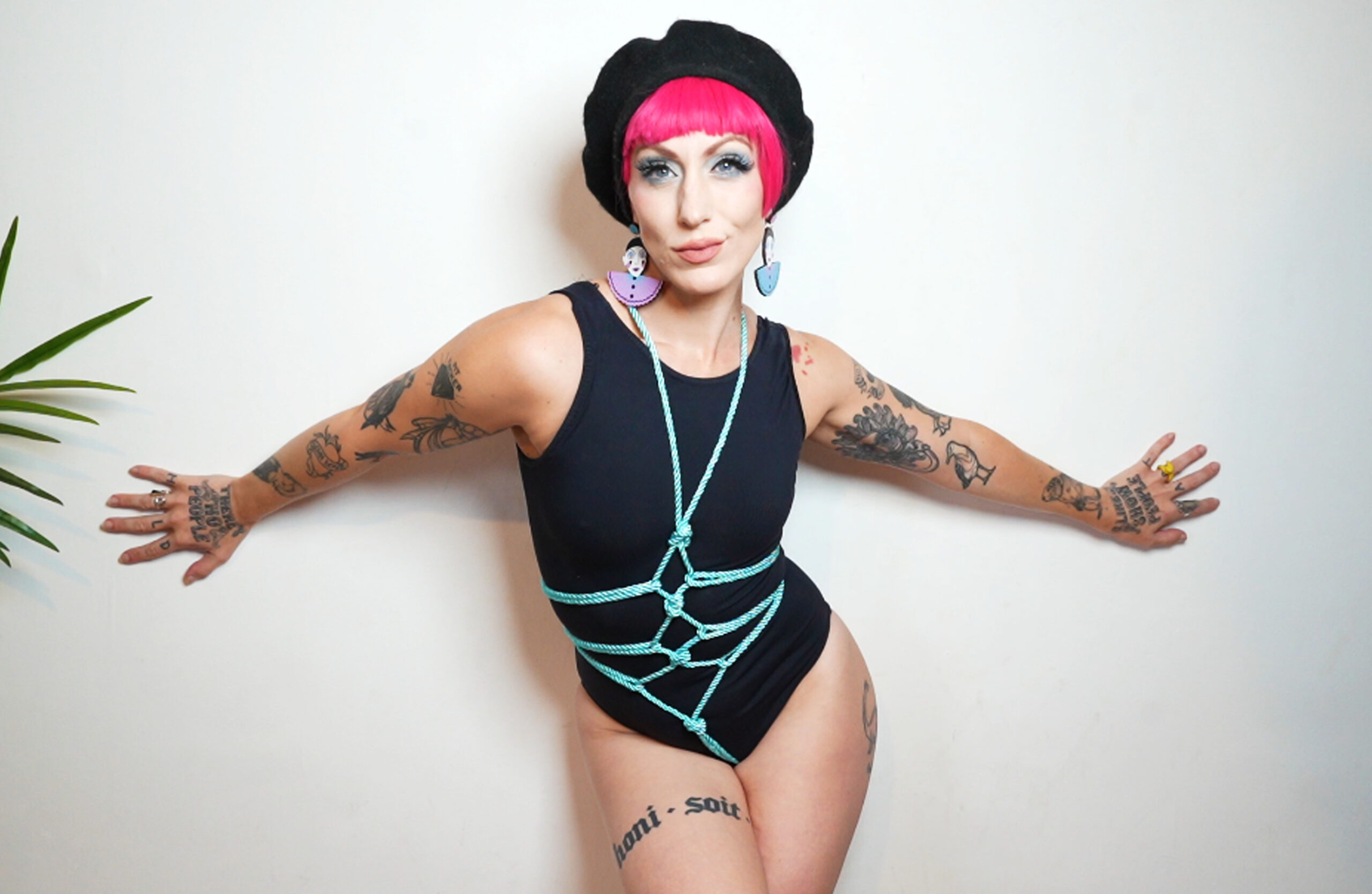Communication and Honesty
Honesty and open communication are the cornerstones of any healthy relationship, particularly when navigating the complexities of intimacy. In exploring the unique dynamics of graysexuality, where individuals experience a spectrum of sexual attraction and desire, these principles become even more crucial.
Navigating Disclosure
Graysexual individuals may find themselves questioning traditional notions of sexuality and facing challenges in communicating their needs and boundaries within intimate relationships. Openly discussing experiences, desires, and comfort levels is essential to ensure both partners feel understood and respected.
Transparency about one’s own graysexual identity can be a significant step in fostering trust and intimacy. It allows for honest conversations about sexual expectations and preferences, preventing misunderstandings and potential hurt feelings.
However, navigating these conversations requires sensitivity and empathy. Partners may have different levels of understanding or comfort with graysexuality, necessitating patience and open-mindedness during discussions. Creating a safe space where both individuals feel comfortable expressing their thoughts and feelings without judgment is paramount.
Expressing Needs and Desires
Honesty and open communication are essential for navigating the complexities of intimacy in any relationship, especially when dealing with the nuanced experiences of graysexuality. Graysexual individuals may find it challenging to express their needs and desires due to societal expectations and personal uncertainties surrounding their own sexuality.
- Graysexual individuals may need to educate their partners about what graysexuality means to them, emphasizing that it doesn’t necessarily mean a lack of attraction but rather a fluid and evolving experience of sexual desire.
- It’s important for graysexual individuals to clearly communicate their boundaries and comfort levels regarding physical intimacy. This could involve discussing preferences for touch, sexual activity, and the frequency of those activities.
- Partners should approach these conversations with empathy and a willingness to learn. Asking clarifying questions and actively listening to the other person’s perspective can help foster understanding and create a more supportive environment.
Ultimately, open and honest communication, coupled with mutual respect and understanding, is key to building fulfilling and intimate relationships for both graysexual individuals and their partners.
Addressing Misunderstandings
Honesty and open communication are essential for navigating the complexities of intimacy in any relationship, especially when dealing with the nuanced experiences of graysexuality. Graysexual individuals may find it challenging to express their needs and desires due to societal expectations and personal uncertainties surrounding their own sexuality.
It is important for graysexual individuals to clearly communicate their boundaries and comfort levels regarding physical intimacy. This could involve discussing preferences for touch, sexual activity, and the frequency of those activities.

Partners should approach these conversations with empathy and a willingness to learn. Asking clarifying questions and actively listening to the other person’s perspective can help foster understanding and create a more supportive environment.
Societal Stigma and Prejudice
Societal stigma and prejudice often create significant barriers for individuals exploring their sexual identities, particularly those who identify as graysexual. Graysexuality, characterized by a fluidity in sexual attraction and desire, challenges traditional binary notions of sexuality, leading to misunderstandings, rejection, and feelings of isolation.
Internalized Shame and Guilt
The societal stigma surrounding graysexuality can lead to internalized shame and guilt. Individuals may struggle with feelings of inadequacy or “wrongness” because their experiences do not conform to conventional sexual norms.
This internalized shame can manifest in various ways, including self-doubt, fear of rejection, and difficulty expressing one’s true desires. It can also impact intimate relationships, as individuals may hesitate to fully disclose their graysexual identity or needs out of fear of judgment or negative consequences.
This external pressure can lead to internalized shame and anxiety, making it difficult for graysexual individuals to be open about their identity and desires. The constant need to hide or downplay their true selves can take a toll on self-esteem, fostering feelings of isolation and inadequacy.
Relationships can also be strained by societal stigma. Partners who lack understanding may pressure graysexual individuals to conform to traditional expectations, leading to resentment and conflict. The fear of rejection or judgment from partners can prevent open communication about needs and boundaries, creating distance and hindering intimacy.
Finding Connection and Support
Navigating the complexities of intimacy in relationships can be challenging, sensual dom especially when exploring the spectrum of sexualities encompassed by graysexuality. Graysexual individuals may face unique hurdles in communicating their desires and establishing healthy boundaries due to societal expectations and personal uncertainties surrounding their own sexuality.
Online Communities and Resources
Finding connection and support is crucial for anyone navigating the complexities of their sexual identity, especially those who identify as graysexual. Online communities and resources offer a valuable platform for graysexual individuals to connect with others who share similar experiences, fostering a sense of belonging and understanding.
Specialized online forums and groups provide spaces where individuals can openly discuss their experiences, challenges, and questions related to graysexuality. These platforms allow for anonymous participation, creating a safe environment for individuals who may feel hesitant to disclose their identities offline.
Beyond connecting with peers, online resources offer valuable information about graysexuality. Websites, blogs, and educational materials provide insights into the diverse experiences of graysexual individuals, helping them understand themselves better and navigate relationships with greater confidence.

Additionally, many online platforms connect graysexual individuals with therapists and counselors who specialize in sexual health and identity exploration. These professionals can offer guidance and support in navigating personal challenges, fostering self-acceptance, and building healthy relationships.
Therapy and Counseling
Finding connection and support is crucial for anyone navigating the complexities of their sexual identity, especially those who identify as graysexual. Online communities and resources offer a valuable platform for graysexual individuals to connect with others who share similar experiences, fostering a sense of belonging and understanding.
Specialized online forums and groups provide spaces where individuals can openly discuss their experiences, challenges, and questions related to graysexuality. These platforms allow for anonymous participation, creating a safe environment for individuals who may feel hesitant to disclose their identities offline.
Beyond connecting with peers, online resources offer valuable information about graysexuality. Websites, blogs, and educational materials provide insights into the diverse experiences of graysexual individuals, helping them understand themselves better and navigate relationships with greater confidence.
Additionally, many online platforms connect graysexual individuals with therapists and counselors who specialize in sexual health and identity exploration. These professionals can offer guidance and support in navigating personal challenges, fostering self-acceptance, and building healthy relationships.
Building a Supportive Network
Finding connection and support is crucial for anyone navigating the complexities of their sexual identity, especially those who identify as graysexual. Online communities and resources offer a valuable platform for graysexual individuals to connect with others who share similar experiences, fostering a sense of belonging and understanding.
- Specialized online forums and groups provide spaces where individuals can openly discuss their experiences, challenges, and questions related to graysexuality. These platforms allow for anonymous participation, creating a safe environment for individuals who may feel hesitant to disclose their identities offline.
- Beyond connecting with peers, online resources offer valuable information about graysexuality. Websites, blogs, and educational materials provide insights into the diverse experiences of graysexual individuals, helping them understand themselves better and navigate relationships with greater confidence.
- Additionally, many online platforms connect graysexual individuals with therapists and counselors who specialize in sexual health and identity exploration. These professionals can offer guidance and support in navigating personal challenges, fostering self-acceptance, and building healthy relationships.
Exploring Sexual Expression within Graysexuality
Exploring the nuances of graysexuality within intimate relationships presents unique challenges. Graysexual individuals, who experience a spectrum of sexual attraction and desire, may find themselves grappling with societal expectations and internalized insecurities surrounding their fluid sexuality.
Defining Personal Boundaries
Exploring the nuances of graysexuality within intimate relationships presents unique challenges. Graysexual individuals, who experience a spectrum of sexual attraction and desire, may find themselves grappling with societal expectations and internalized insecurities surrounding their fluid sexuality.
- Communication is paramount. Graysexual individuals should clearly articulate their needs and boundaries to their partners, emphasizing that their fluctuating desires do not reflect a lack of interest or commitment. Openly discussing preferences for touch, intimacy frequency, and activities can prevent misunderstandings and foster mutual understanding.
- Patience and empathy are essential. Partners may need time to grasp the complexities of graysexuality. Creating a safe space for honest conversations, where all perspectives are valued, is crucial. Active listening and a willingness to learn about each other’s experiences can strengthen the relationship.
- Defining boundaries together helps ensure both partners feel respected and comfortable. This could involve exploring different types of intimacy beyond traditional sex, such as emotional intimacy, physical touch, or shared activities that foster connection.
Navigating the complexities of graysexuality in intimate relationships requires open communication, empathy, and a willingness to redefine conventional notions of sexuality. By prioritizing understanding and acceptance, partners can create a supportive and fulfilling environment where both individuals feel seen and valued for who they are.
Negotiating Consent and Comfort Levels
Exploring the nuances of graysexuality within intimate relationships presents unique challenges. Graysexual individuals, who experience a spectrum of sexual attraction and desire, may find themselves grappling with societal expectations and internalized insecurities surrounding their fluid sexuality.
- Communication is paramount. Graysexual individuals should clearly articulate their needs and boundaries to their partners, emphasizing that their fluctuating desires do not reflect a lack of interest or commitment. Openly discussing preferences for touch, intimacy frequency, and activities can prevent misunderstandings and foster mutual understanding.
- Patience and empathy are essential. Partners may need time to grasp the complexities of graysexuality. Creating a safe space for honest conversations, where all perspectives are valued, is crucial. Active listening and a willingness to learn about each other’s experiences can strengthen the relationship.
- Defining boundaries together helps ensure both partners feel respected and comfortable. This could involve exploring different types of intimacy beyond traditional sex, such as emotional intimacy, physical touch, or shared activities that foster connection.
Navigating the complexities of graysexuality in intimate relationships requires open communication, empathy, and a willingness to redefine conventional notions of sexuality. By prioritizing understanding and acceptance, partners can create a supportive and fulfilling environment where both individuals feel seen and valued for who they are.
Embracing Fluidity and Individuality
Graysexuality presents unique challenges when navigating intimacy within relationships. Individuals identifying as graysexual experience a spectrum of sexual attraction and desire that fluctuates over time. This fluidity can make it difficult to communicate needs and expectations, leading to misunderstandings and potential hurt feelings.
Open and honest communication is crucial for fostering understanding and trust. Graysexual individuals should clearly articulate their boundaries and comfort levels regarding physical intimacy, emphasizing that fluctuating desires don’t equate to a lack of interest or commitment. Partners need time to understand this concept and should approach conversations with patience and empathy. Actively listening to each other’s perspectives and asking clarifying questions can bridge the gap and build stronger connections.
Defining boundaries together is essential for ensuring both partners feel respected and comfortable. This may involve exploring various forms of intimacy beyond traditional sex, such as emotional intimacy, physical touch, or shared activities that foster connection.
Ultimately, navigating graysexuality in relationships requires a commitment to open communication, mutual understanding, and a willingness to redefine conventional notions of sexuality. By prioritizing empathy and acceptance, couples can create a supportive and fulfilling environment where both individuals feel seen, heard, and valued for who they truly are.
Arielle Likes to Cook
Worthrich
- Why CBD Gummy Sweets Are Perfect For Beginners - November 10, 2025
- What Is The Best Neck Firming Cream That Really Works In The UK? - November 9, 2025
- What Are The Benefits Of Taking CBD Gummies For Mental Health? - November 8, 2025

